Kodak's Work not Done
Posted January 2012 in History of Photography
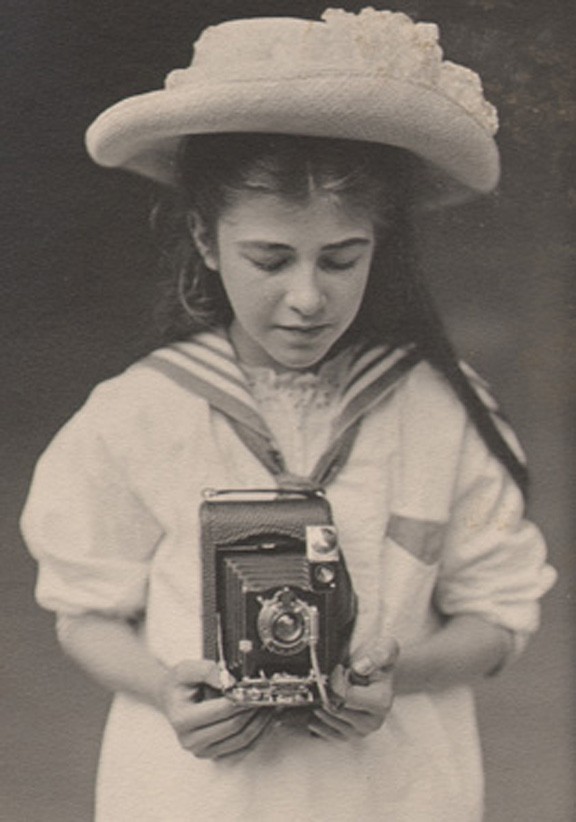 Detail: "Girl with Kodak": particulars witheld: vintage platinum print from PhotoSeed archive: circa 1907-08: 22.9 x 13.2 cm (mount: 33.5 x 23.6 cm)
Detail: "Girl with Kodak": particulars witheld: vintage platinum print from PhotoSeed archive: circa 1907-08: 22.9 x 13.2 cm (mount: 33.5 x 23.6 cm)The inevitable yet sad news today of the Eastman Kodak Company’s filing for bankruptcy protection in the court of the Southern District of New York state did not come as a surprise to those of us who have been paying attention to the company’s mounting woes over the past several decades. However, what is more shocking to me is how the once ubiquitous Kodak brand no longer figures in any cultural discourse as it pertains to amateur photography considering its formerly ubiquitous place in that very culture.
Alfred Stieglitz might have used up part of his 15 minutes of fame, to quote another artist provocateur, by railing against the culture of a company that promised to do the rest after you pressed their many shutter buttons, but even he could certainly not deny the value and cumulative effect all those hundreds of millions, perhaps billions, of little yellow boxes containing treasures not yet exposed had when opened by the masses. The bicycle craze be damned you say? Without naming names, I know for a fact more than a few caught opening up one of those many Kodak boxes on a weekend trip to the country or simply photographing the amorphous shapes of pots and pans in their own sink using Kodak film who went on to became famous or infamous photographers in their own right. Their efforts have contributed much to the history of Photography and even changed-and continue to do so- the perception of visual ideas by way of a camera lens-using a Kodak or some other brand.
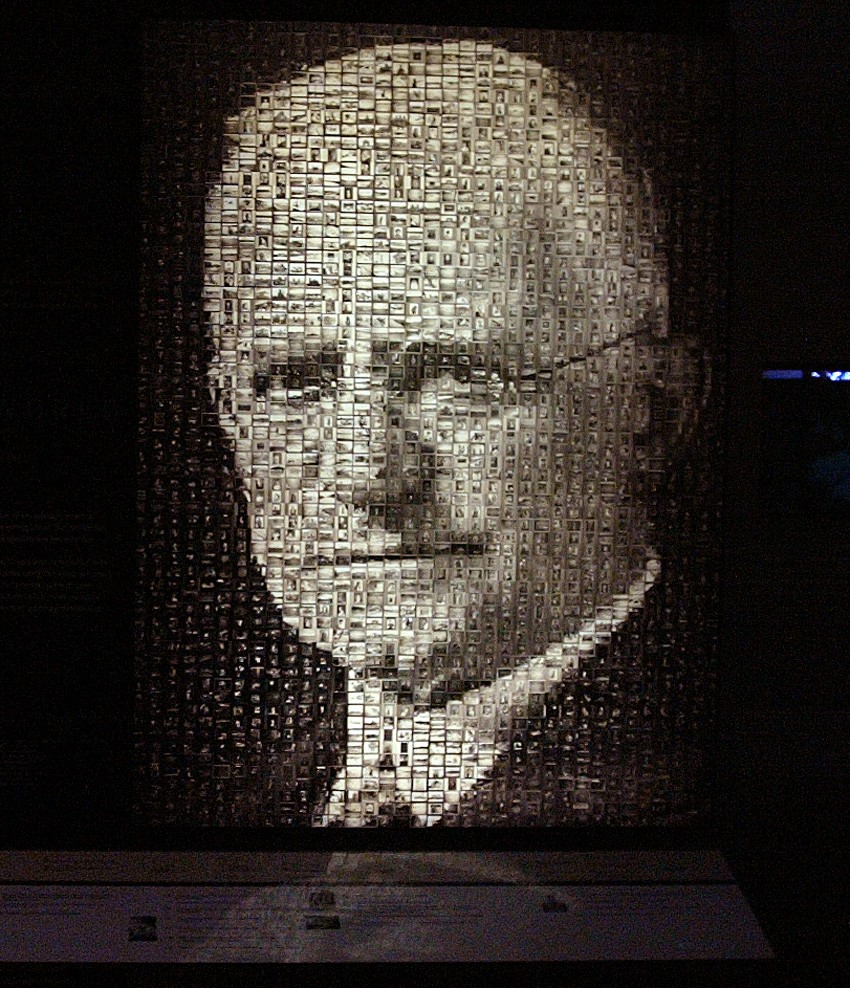 Audiovisual display of George Eastman: a composite portrait done with hundreds of individual photographs held in the George Eastman House International Museum of Photography and Film collections. Rochester: George Eastman House public exhibit space: Photograph by David Spencer: 2004
Audiovisual display of George Eastman: a composite portrait done with hundreds of individual photographs held in the George Eastman House International Museum of Photography and Film collections. Rochester: George Eastman House public exhibit space: Photograph by David Spencer: 2004And if you will pardon my own rant for only a moment, a little historical background please, if only to diffuse some of the screeds I’ve been reading lately upon said company’s demise-for it is still a remarkable achievement- and rare-that an enterprise such as Kodak has been able to survive for 131 years, even in bankruptcy reorganization.
The founder, George Eastman, (1854-1932) surely had his faults. If you care to read, as I have been, Elizabeth Brayer’s important and exhaustive biography of Eastman first published in 1996, you will find however that they were abundantly balanced with a philanthropy not exercised enough in modern times. You will learn Eastman was anti-union and ran a company whose tentacles reached around the world to defend Kodak patents to the point of stifling innovation. And if that didn’t work out, he would just offer up a mountain of cash in order to buy out the other guy in route to creating and maintaining a monopoly of those yellow boxes as well as the manufacturer of the very cameras using the gelatinous rolled film found inside of them.
 Detail: official court transcript document of Eastman Kodak Company Chapter 11 Bankruptcy filing: Southern District of New York state: Manhatten, New York: January 19, 2012.
Detail: official court transcript document of Eastman Kodak Company Chapter 11 Bankruptcy filing: Southern District of New York state: Manhatten, New York: January 19, 2012.Eastman, a man of the gilded age who harnessed the sweat of America’s Industrial Revolution for fantastic riches, also gave back-enough so in my opinion to become basis as unwitting poster child to the very idea behind the formation of an American middle class. As chronicled in Brayer’s volume, Eastman in the guise of the anonymous “Mr. Smith”, gave upwards of 20 million dollars in his lifetime-almost single handedly building the fledgling Massachusetts Institute of Technology (MIT) from the ground up. But he also donated millions more to the children and citizens of his very own Rochester in the form of brand new dental clinics. How do scores, let alone successive generations, put a long-term value on both brains and good teeth?
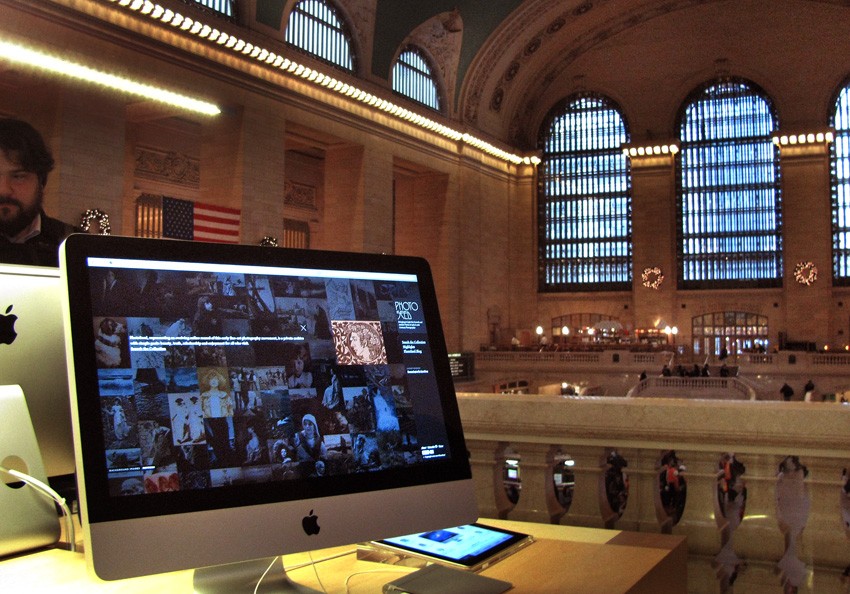 Kodak's famous Colorama displays were formerly projected from the area now currently occupied by Apple's newest store in Grand Central Terminal in New York City. With my sincerest apologies, I'll shamelessly use this opportunity as a plug for yours truly. Photograph by David Spencer: 2011
Kodak's famous Colorama displays were formerly projected from the area now currently occupied by Apple's newest store in Grand Central Terminal in New York City. With my sincerest apologies, I'll shamelessly use this opportunity as a plug for yours truly. Photograph by David Spencer: 2011For myself, Kodak was most definitely alive and bigger than life as I walked into Manhattan’s Grand Central Terminal as a kid in the late 1960’s and marveled at their magnificent Colorama displays. For those indelible images, courtesy of Kodak and a healthy dose of Life magazine, I’ll say thanks and count myself a photographer forever. In regards to my recent trek through Grand Central, the ubiquity of another brand-Apple, now holds court where those giant transparencies formerly shown bright. Genius Bar indeed.
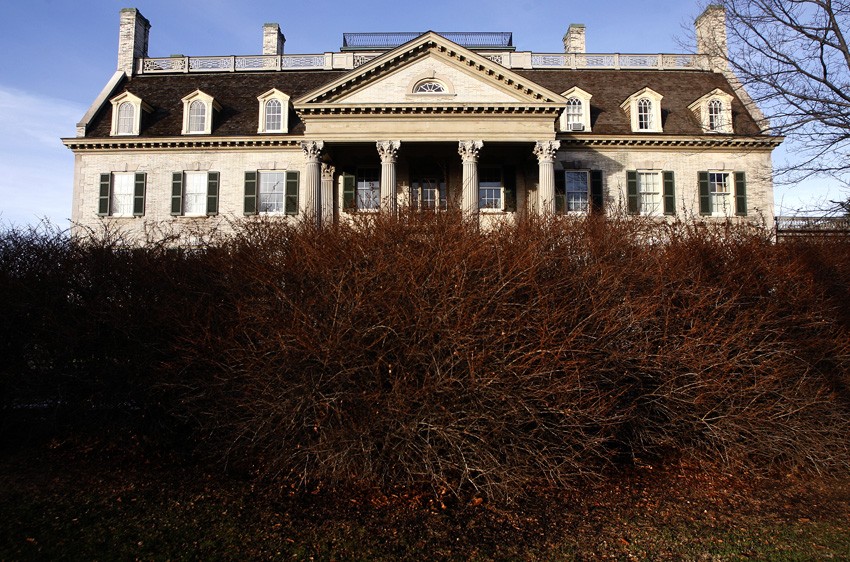 Mansion facade: The George Eastman House International Museum of Photography and Film-a different look I hope….Rochester, New York: 2009. Photograph by David Spencer
Mansion facade: The George Eastman House International Museum of Photography and Film-a different look I hope….Rochester, New York: 2009. Photograph by David SpencerIn light of this recent bankruptcy news and its effect on those separate but linked entities of the Kodak company itself- the city of Rochester as well as the guardian, research institution and public display facility extraordinaire to the history of Photography- the George Eastman House International Museum of Photography and Film- my message is, please carry on. And to all those affiliated or working in both places, let me apologize for Mr. Eastman just this once and say chin up, your work is most definitely not done, and hopefully never will be.
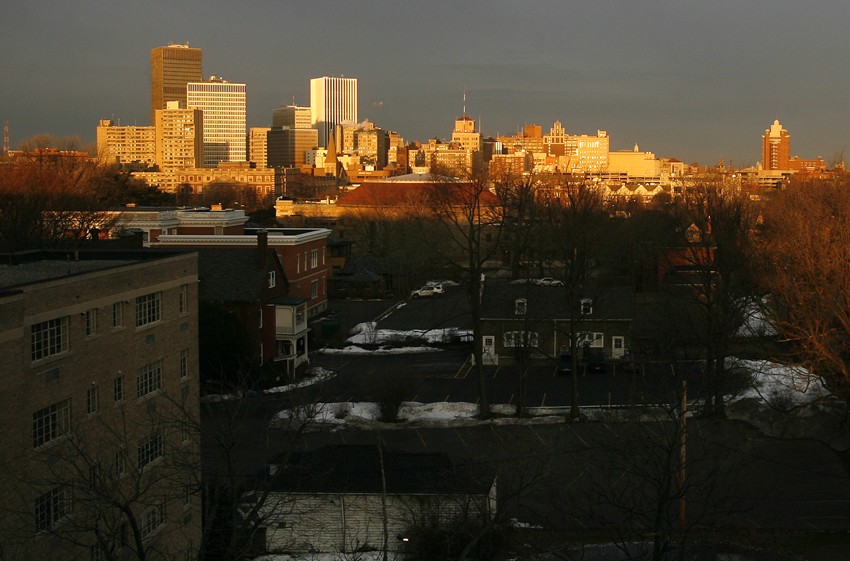 Sunrise over the city of Rochester, New York: February, 2009. A new beginning for sure. Photograph by David Spencer
Sunrise over the city of Rochester, New York: February, 2009. A new beginning for sure. Photograph by David SpencerThis entry was posted on Friday, January 20th, 2012 at 12:42am and is filed under History of Photography. You can follow any responses to this entry through the RSS 2.0 feed.